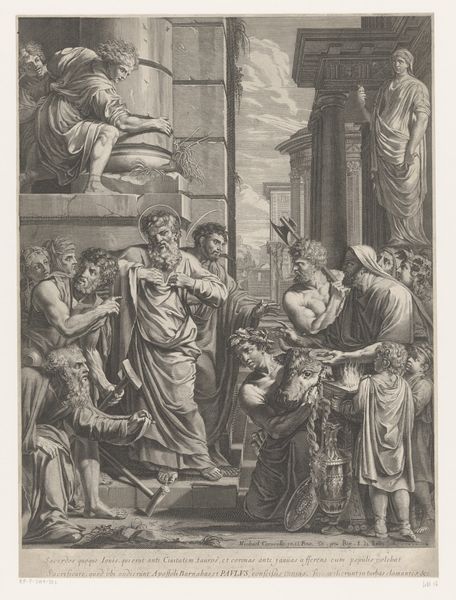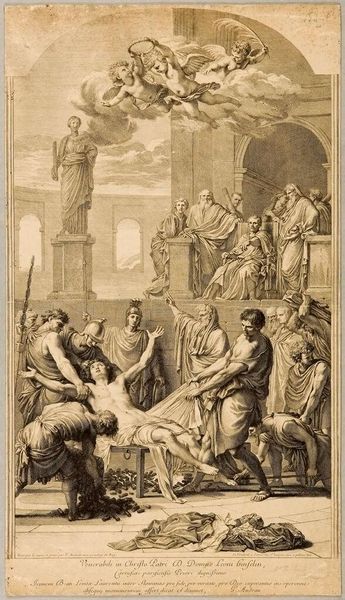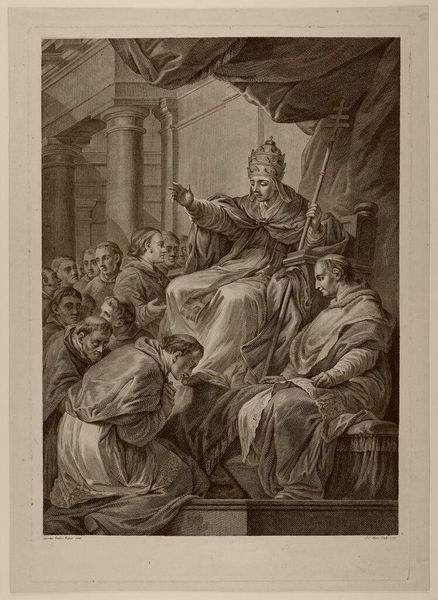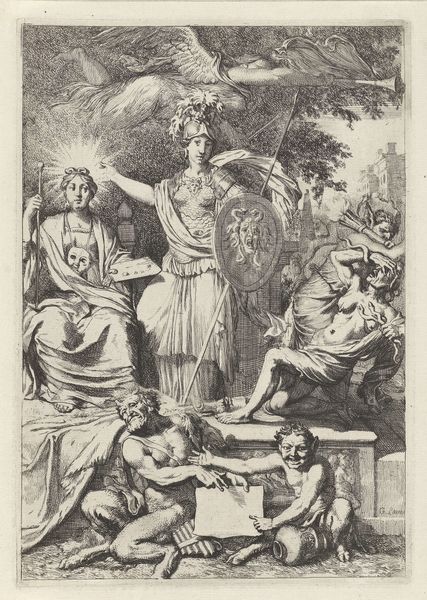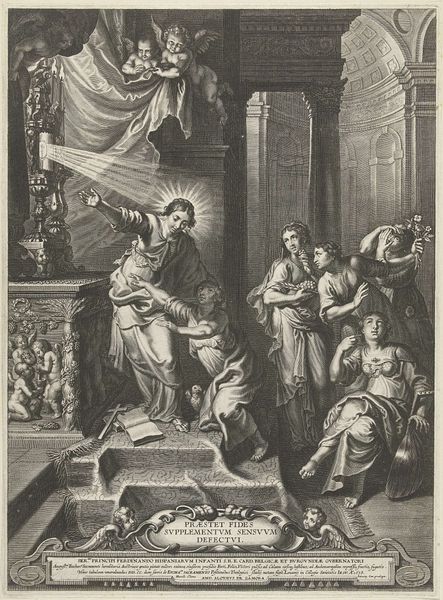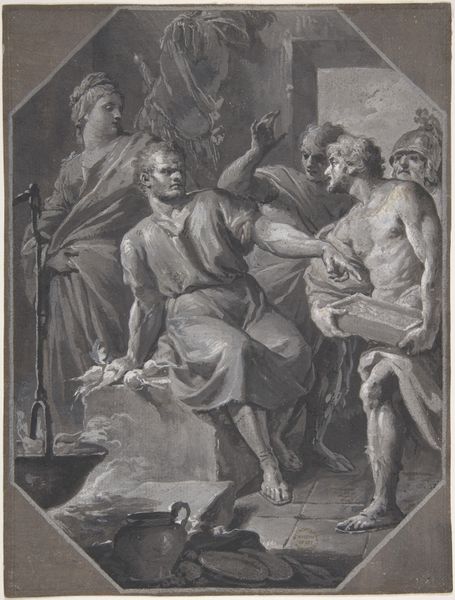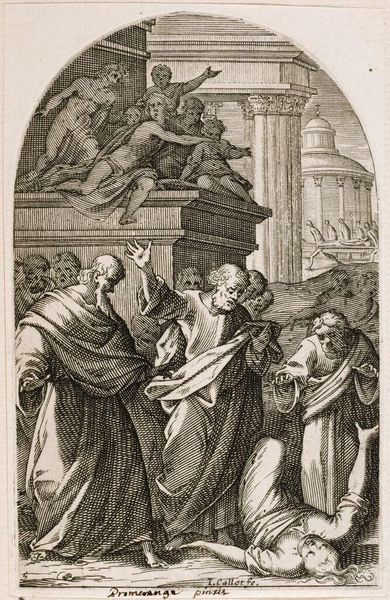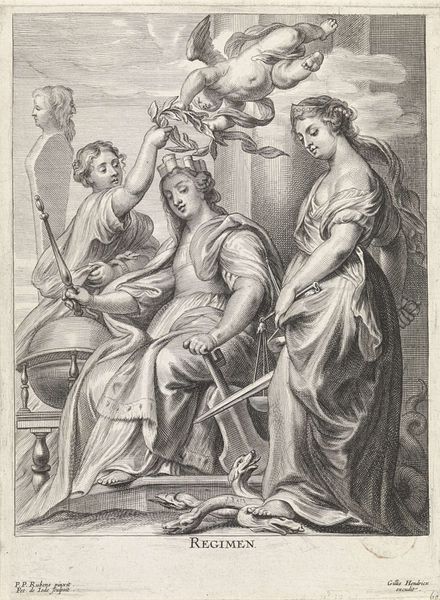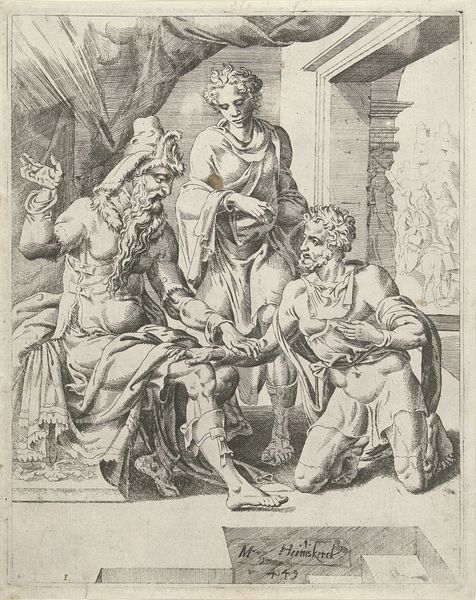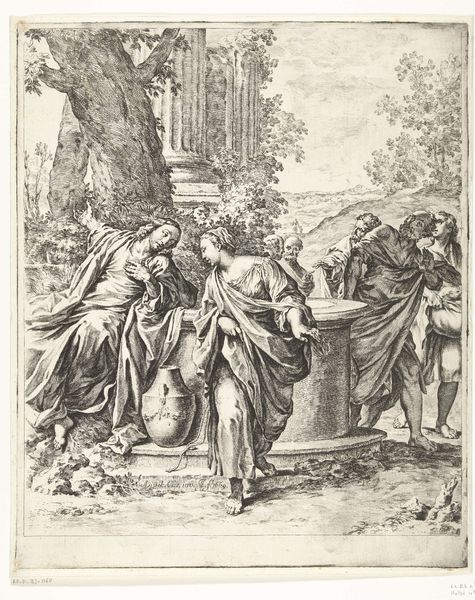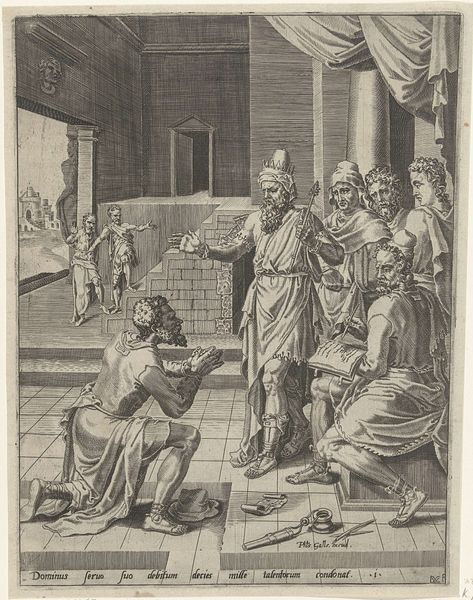
Allegorical portrait of Felipe el Bueno (Philip the Good Duke of Burgundy) founder of the Order of the Golden Fleece 1778
0:00
0:00
Dimensions: Sheet: 12 5/8 × 8 1/4 in. (32 × 21 cm)
Copyright: Public Domain
Curator: Here we have a piece from 1778: an allegorical portrait of Philip the Good, Duke of Burgundy. Manuel Salvador Carmona is credited for crafting this intricate engraving, currently residing at the Metropolitan Museum of Art. Editor: It has a serene theatricality, doesn’t it? Like a meticulously staged tableau vivant, rendered in shades of quiet ambition. The details are so incredibly crisp. Curator: Absolutely, the medium, engraving, allows for remarkable precision, doesn't it? Carmona clearly exploits that here. I’m drawn to how the very process of engraving– the precise cutting and incising– mirrors the hierarchical order the piece represents. It's labour-intensive, designed to showcase not only skill, but also a certain degree of social and political control. Editor: True, every line appears carefully considered. Look at the folds of fabric on Philip. The detail must have taken immense dedication. But what I appreciate is that these sharp lines manage to evoke a dreamlike stillness. Philip the Good is depicted almost floating above the scene. I get this sense of detached benevolence from him, even an air of melancholy, surrounded by symbols of power and order. Curator: I completely see that. The allegorical figures, with their classical drapery, certainly reinforce the theme. There's almost an excess of symbolism; it speaks volumes about the social function of art at the time – creating visual metaphors for virtue, leadership, lineage... all those heavy, slightly absurd notions! I can almost hear the copper plate meeting the press to mass produce this image, so people of certain classes could then display their ties to political ideologies, but at a cost, of course, in line with class structure. Editor: You are right, the more I examine its material properties, its existence as a designed article to communicate with various classes, the more interesting it becomes to me. The more and more engraving has become divorced from its earlier use, the more appealing this engraving appears. Curator: Indeed! I'm glad we were able to talk a bit about this print and the ideas it conveys, hopefully providing food for thought! Editor: Agreed. Exploring both the labor that made it and the legacy of this artwork gave us an interesting opportunity to consider the enduring presence and evolving influence of this powerful work.
Comments
No comments
Be the first to comment and join the conversation on the ultimate creative platform.


